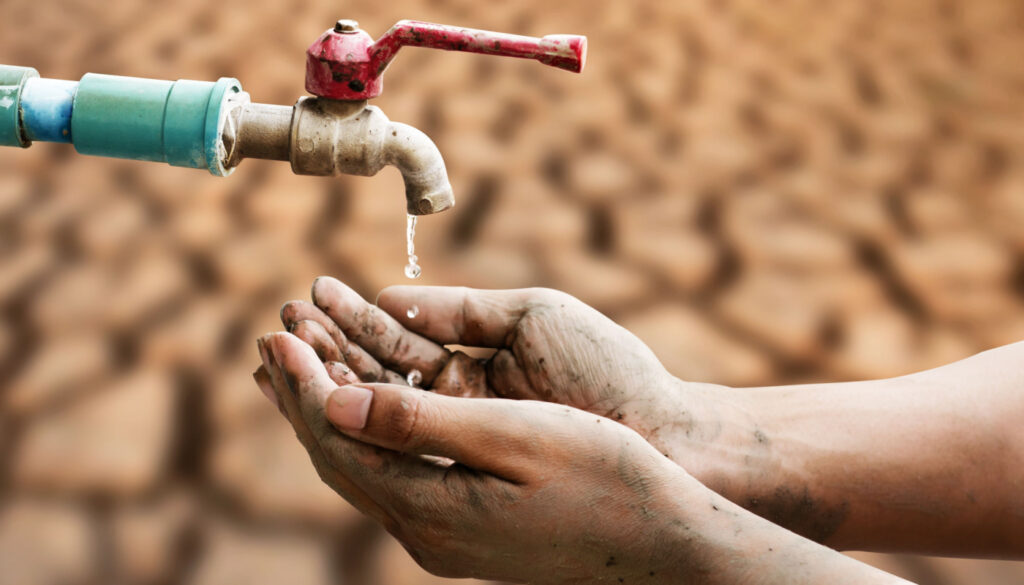Water scarcity and stress, exacerbated by climate change, are pressing global issues with far-reaching implications for sustainability. As the world becomes increasingly thirsty, compounded by the growth of the global population, the problem of water scarcity is set to intensify. Currently, an estimated 2 billion people reside in water-stressed areas, and projections for 2040 indicate that 44 countries will face “extremely high” or “high” water stress levels.
Water Scarcity and Stress
Water scarcity occurs when demand exceeds the available supply, leading to insufficient access to clean fresh water for essential purposes such as drinking, sanitation, and agriculture. Water stress measures the pressure on water resources in relation to demand, highlighting regions where resources are strained.

Climate Change’s Impact on Water Resources
Climate change plays a significant role in exacerbating water scarcity and stress. Increasing temperatures, changing precipitation patterns, and more frequent extreme weather events disrupt hydrological cycles, affecting the availability and quality of water resources. As global temperatures continue to rise, the risk of droughts, floods, and water-related disasters intensifies.
Efforts to Address Water Scarcity
Countries worldwide are undertaking various measures to address water scarcity and stress both in water management strategies as well as infrastructure development. Governments and local authorities are implementing innovative water management strategies that emphasize conservation, efficiency, and responsible use of water resources. These strategies include promoting water-saving technologies, improving irrigation practices, and implementing water pricing mechanisms to encourage responsible consumption. Countries are investing in infrastructure development to enhance water storage and distribution systems. This includes constructing reservoirs, dams, and water treatment facilities to improve water supply and ensure its equitable distribution to communities.
TaKaDu: Empowering Utilities for Sustainable Water Management
TaKaDu’s CEM (Central Event Management) solution, helps utilities to address water scarcity and promote sustainable water management. The analytics platform enables real-time monitoring, detection of network inefficiencies, leakages, and abnormal consumption patterns. By promptly identifying and addressing asset failures such as leaks early in their evolution, TaKaDu assists utilities to achieve more-with-less by reducing water losses, optimize the water network operation, improve customer service and achieving sustainability goals.
Projected Future and Global Situation
Projections for 2040 suggest a troubling rise in water stress levels, with 44 countries expected to face “extremely high” or “high” water stress, affecting millions of people worldwide. This represents a significant challenge, as it underscores the urgent need for collective action to address water scarcity, mitigate climate change, and implement sustainable water management practices globally, ensuring the well-being of a growing percentage of the world’s population.
Through effective water management strategies, infrastructure development, and the adoption of innovative technologies like TaKaDu’s analytics platform, we can work towards mitigating water scarcity, reducing water stress levels, and achieving sustainable water management practices.
Collaborative efforts among governments, communities, and technology providers are crucial to ensuring water security for present and future generations. By prioritizing responsible water use, conservation, and sustainable practices, we can preserve this precious resource, protect ecosystems, and enhance the well-being of communities worldwide.




